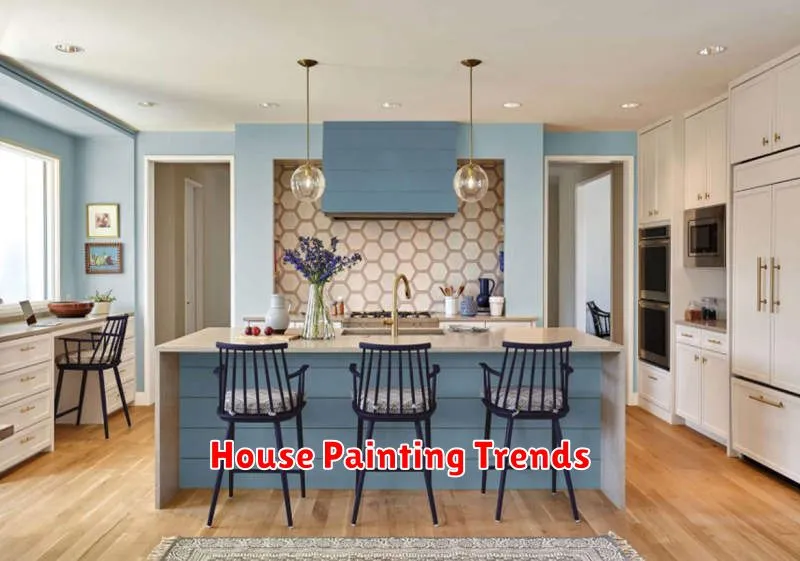Get ready to revamp your home’s exterior with the hottest house painting trends for 2024! This year is all about bold choices and sophisticated palettes. We’ve compiled the top 10 house painting ideas to inspire your next home makeover, covering everything from classic neutrals to vibrant accent colors and innovative exterior paint techniques. Whether you’re looking to increase your home’s curb appeal or simply refresh its look, our guide to the latest exterior paint colors and painting trends will have you covered. Prepare to be amazed by the transformative power of a fresh coat of paint!
Soft Pastel Palette
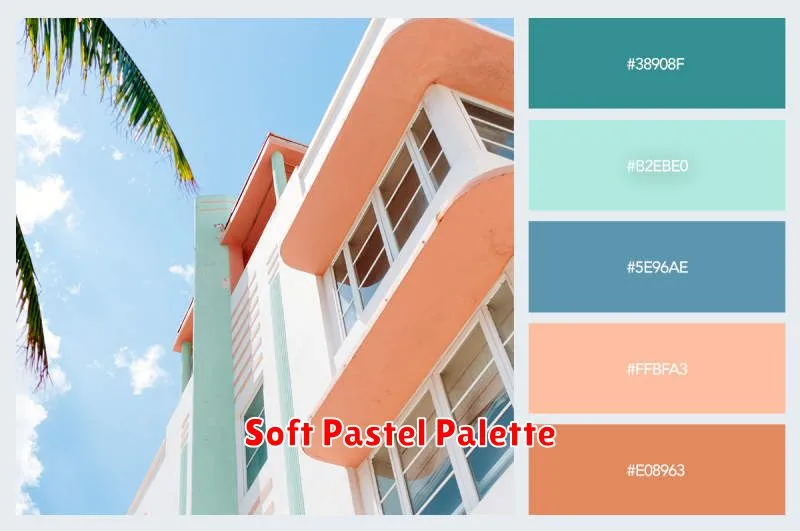
Are you looking to create a calming and serene atmosphere in your home or artwork? Then a soft pastel palette might be just what you need! This color scheme uses gentle, muted shades that evoke feelings of tranquility and peace. It’s incredibly versatile, working beautifully in various design styles.
The core of a soft pastel palette revolves around muted tones. Think creamy whites, soft pinks, delicate lavenders, and gentle blues. These colors lack the vibrancy of their bolder counterparts, instead possessing a softer, more subdued quality. This makes them perfect for creating a relaxing and inviting space.
Key colors often found in a soft pastel palette include:
- Powder Blue: A light, airy blue that evokes feelings of calm and serenity.
- Blush Pink: A gentle, rosy pink that is both feminine and calming.
- Lavender: A delicate purple that adds a touch of sophistication and romance.
- Creamy White: Provides a clean and bright base for the other pastel hues.
- Mint Green: A refreshing and subtly vibrant addition to the palette.
How to use a soft pastel palette: The beauty of this palette is its versatility. It can be used in a variety of ways:
- Monochromatic schemes: Varying shades and tints of a single pastel color (like different shades of blush pink).
- Analogous schemes: Using colors that are adjacent to each other on the color wheel (e.g., lavender, light purple, and periwinkle).
- Complementary schemes: Pairing a pastel with its muted complementary color (a soft green with a dusty rose, for instance). However, be mindful of maintaining the overall softness.
Where to use a soft pastel palette: This palette works wonderfully in a variety of settings:
- Bedrooms: Create a peaceful and restful sleep environment.
- Living rooms: Foster a calming and inviting atmosphere for relaxation and socializing.
- Bathrooms: Enhance the spa-like feel of a bathroom.
- Nurseries: A gentle and soothing palette perfect for a baby’s room.
- Artwork and illustrations: To convey emotions of peace, serenity, and tranquility.
Experiment with different shades and combinations to discover your perfect soft pastel palette. Remember, the key is to keep it gentle, harmonious, and ultimately, relaxing!
Matte Black Accents
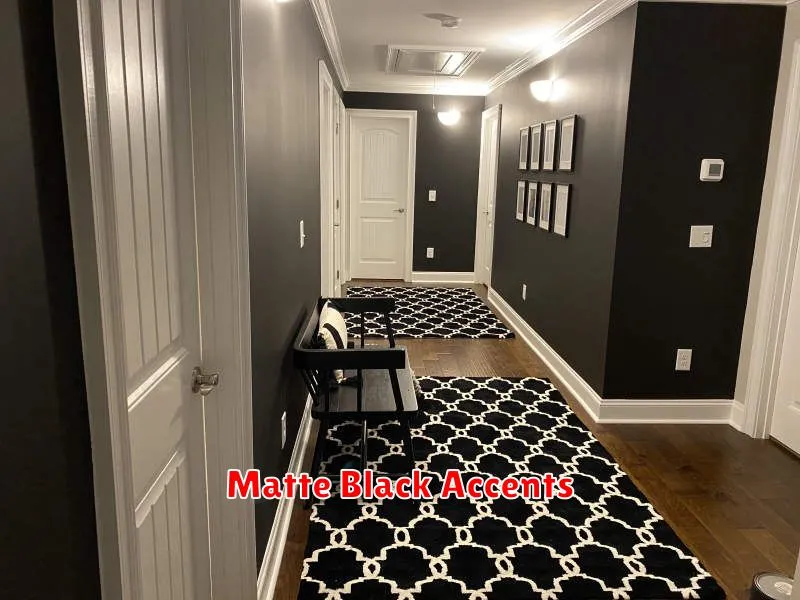
Adding matte black accents to your home décor can instantly elevate the style and create a sophisticated, modern look. This versatile color works surprisingly well in a variety of design schemes, from minimalist to industrial and even farmhouse.
The beauty of matte black lies in its subtlety. Unlike its glossy counterpart, matte black doesn’t reflect light dramatically, allowing it to blend seamlessly into the background while still commanding attention. This makes it ideal for adding depth and visual interest without overwhelming the space.
Consider incorporating matte black through various home accessories. A matte black vase filled with fresh flowers can add a touch of elegance to a coffee table. Matte black picture frames can create a cohesive gallery wall. Even smaller details, like matte black drawer pulls or light switch covers, can make a significant difference.
For a bolder statement, think about larger pieces of furniture. A matte black coffee table or side table can ground a living room, while a matte black headboard can become a focal point in the bedroom. Remember to balance these larger elements with lighter colors and textures to prevent the space from feeling too dark or heavy.
Lighting fixtures are another great place to incorporate matte black. A matte black pendant light can add a touch of industrial chic, while a matte black floor lamp can create a warm and inviting atmosphere. The contrast between the matte black and the light it emits is visually striking.
When using matte black accents, it’s essential to consider the overall aesthetic of your space. While it complements many styles, it’s crucial to ensure a balance and avoid overwhelming the room. A few well-placed matte black pieces can transform a room, adding sophistication and a touch of modern edge.
Ultimately, the key to successfully incorporating matte black accents lies in thoughtful placement and consideration of the overall design. Use it sparingly for subtle refinement or more liberally for a dramatic effect, but always remember to keep the space feeling balanced and inviting.
Earthy Tones
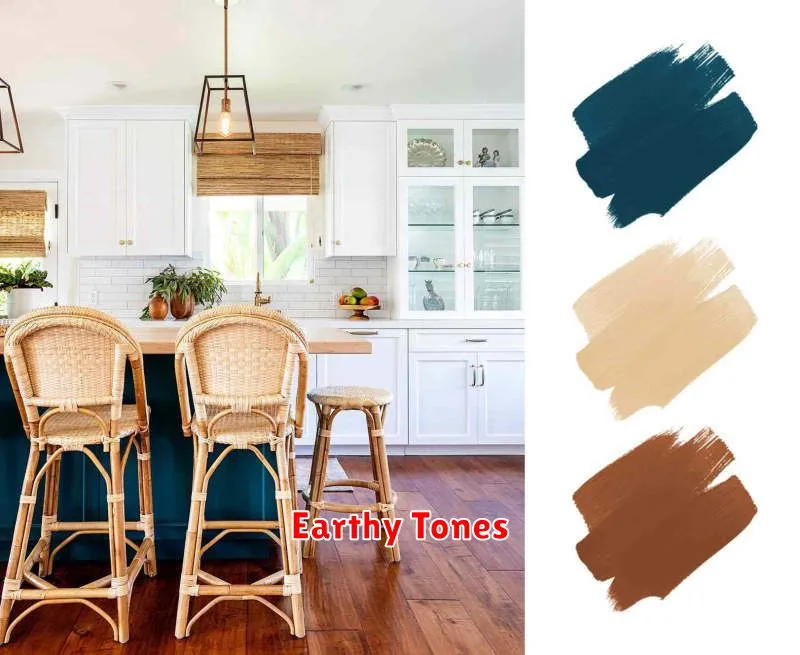
Earthy tones are having a moment. These warm, natural hues are popping up everywhere, from fashion runways to interior design magazines. But what exactly makes them so appealing, and how can you incorporate them into your own life?
The beauty of earthy tones lies in their versatility. They range from deep, rich browns and greens to softer creams and beiges, offering a wide palette for expressing personal style. Whether you’re aiming for a rustic, bohemian, or minimalist aesthetic, earthy tones provide a solid foundation.
One of the key reasons for their enduring popularity is their calming effect. These muted shades evoke a sense of tranquility and connection to nature, creating a peaceful and relaxing atmosphere. In a world increasingly dominated by bright, stimulating colors, earthy tones offer a welcome respite.
Incorporating earthy tones into your home is relatively straightforward. Consider painting your walls in a soft beige or sage green. Add natural textures like wood, rattan, or linen through furniture and accessories. Introduce pops of color with terracotta pots, or earthy-toned throws and cushions.
For fashion, earthy tones can be just as impactful. Think about pairing a deep brown skirt with a cream-colored sweater, or accessorizing a beige dress with a statement necklace in shades of olive green or burnt orange. The possibilities are endless.
Ultimately, the appeal of earthy tones lies in their timeless quality. Unlike fleeting trends, these colors remain consistently stylish, allowing you to create a look that’s both sophisticated and enduring. So, embrace the warmth and serenity of earthy tones and discover their transformative power in your own space.
Bright Color Blocks
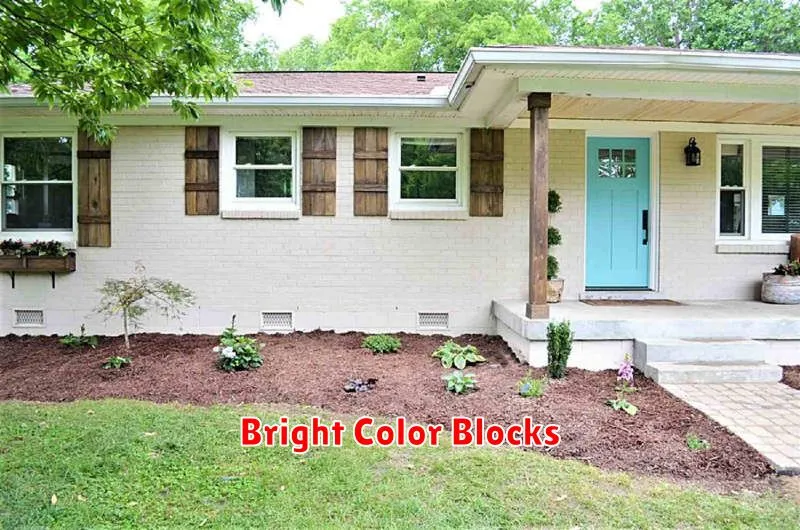
Color blocking is a bold and exciting design trend that’s been making waves in various creative fields, from fashion and interiors to graphic design and even culinary arts. It’s all about the strategic juxtaposition of solid, contrasting colors to create a visually striking effect.
The beauty of color blocking lies in its simplicity. It’s about making a statement with minimal fuss. Instead of relying on intricate patterns or textures, the focus is solely on the powerful impact of color combinations. This makes it a remarkably versatile technique, adaptable to any style or aesthetic.
When experimenting with color blocking, understanding the color wheel is crucial. Complementary colors (those opposite each other on the wheel) create high contrast and a vibrant energy. Analogous colors (those next to each other) offer a more harmonious and subtle look. Exploring different color pairings is part of the fun!
Choosing the right colors depends entirely on the desired mood and context. Bold, saturated hues like crimson, cobalt, and emerald create a vibrant and energetic feel, while softer pastels or muted tones can evoke a sense of calm and sophistication. Don’t be afraid to experiment and find what resonates with you.
Beyond the visual appeal, color blocking offers a surprising level of practicality. In fashion, it can be used to create flattering silhouettes and emphasize certain features. In interior design, it can be used to define spaces and create a sense of order. Its adaptability makes it a timeless design choice.
Whether you’re a seasoned designer or a curious novice, exploring the world of color blocking is a rewarding experience. Its simplicity belies its potential for creative expression, offering endless opportunities to experiment and create something truly unique. So, grab your paintbrushes, your fabrics, or your digital design tools and dive in! The only limit is your imagination.
Neutral Minimalist Shades
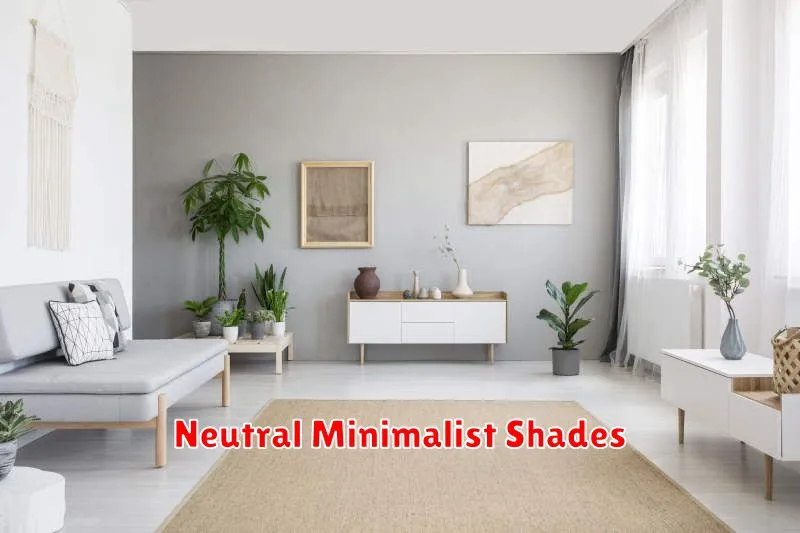
Neutral minimalist shades are having a moment. This design aesthetic, characterized by its calming and sophisticated palette, is increasingly popular for both home decor and fashion. The core principle revolves around a limited color scheme, typically featuring variations of whites, grays, beiges, and creams, creating a sense of serene simplicity.
The beauty of this approach lies in its versatility. Neutral palettes act as a blank canvas, allowing other design elements—textures, materials, and subtle pops of color—to take center stage. Instead of relying on bold hues to make a statement, the focus shifts to the quality and craftsmanship of the pieces themselves. This results in a timeless and effortlessly chic look that transcends fleeting trends.
In interior design, neutral minimalist shades can transform any space. Imagine a living room adorned with creamy white walls, punctuated by the warm texture of a natural wool rug and the sleek lines of minimalist furniture. A touch of black—perhaps in the form of a statement lamp or picture frames—adds depth and visual interest without disrupting the overall sense of calm.
The same principles apply to fashion. A minimalist wardrobe built around neutral shades is incredibly practical. The pieces effortlessly mix and match, creating a multitude of outfits with minimal effort. The focus is on quality fabrics and well-tailored silhouettes, allowing each garment to stand out for its inherent elegance.
Beyond aesthetics, the appeal of neutral minimalist shades extends to their psychological impact. The muted tones are known for their calming effect, creating a sense of peace and tranquility in both living spaces and personal style. This makes it an ideal choice for those seeking a less visually stimulating, more relaxing environment.
Ultimately, the adoption of neutral minimalist shades is a statement of mindful design. It’s a conscious choice to prioritize quality, simplicity, and the enduring appeal of understated elegance. It’s a style that resonates with those who value calm, intentionality, and timeless sophistication.
Two-Tone Walls
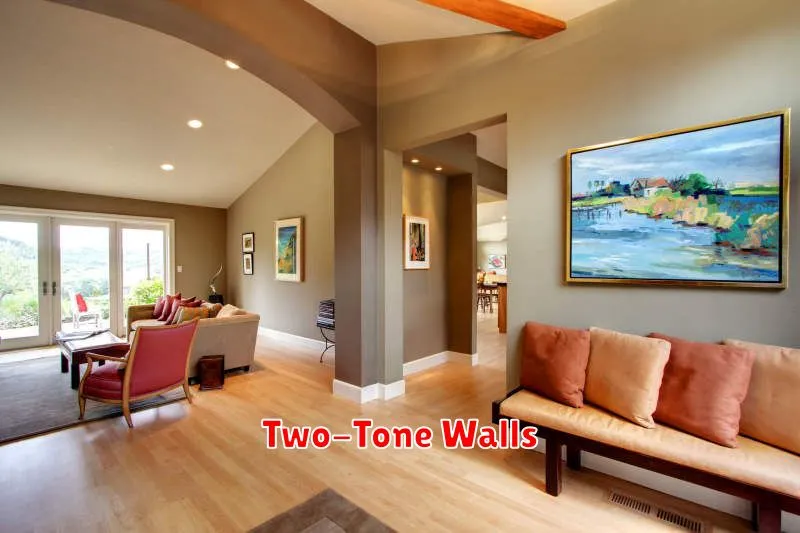
Adding a two-tone wall to your home is a fantastic way to inject personality and visual interest into any room. It’s a surprisingly versatile design choice, capable of creating a wide range of moods and styles, from modern minimalism to cozy rustic charm. The beauty lies in the endless possibilities for color combinations and application techniques.
One popular approach is using a darker shade on the bottom half of the wall and a lighter shade on the top. This classic technique is often used to create a sense of grounding and stability, making the room feel more balanced and spacious. The darker color at the bottom can visually anchor the space, while the lighter color above brightens and opens up the room.
Conversely, you can reverse the process, using a darker accent color on the top portion of the wall. This can be particularly effective in rooms with high ceilings, drawing the eye upward and adding a touch of drama. It’s a great way to create a focal point above a fireplace or bed, for instance.
The choice of colors is, of course, paramount. Consider the existing decor in the room, your personal style, and the overall mood you wish to achieve. Complementary colors can create a harmonious and balanced space, while contrasting colors can offer a more bold and vibrant statement. Experiment with different shades within the same color family for a subtle and sophisticated effect.
Beyond the color selection, think about the application technique. A clean, crisp line between the two colors offers a modern and clean look. For a more rustic or textured feel, you might consider a slightly uneven or blended transition. Using wainscoting or other architectural details can also add visual interest and further define the separation between the two colors.
No matter your chosen method, remember that proper preparation is key to a successful two-tone wall. Ensure your walls are smooth and clean before painting to achieve the best possible finish. Using painter’s tape can help maintain sharp lines, while a high-quality paint will contribute to a long-lasting and beautiful result. A little planning and attention to detail will transform your walls into a stylish statement piece.
Rustic Warm Colors
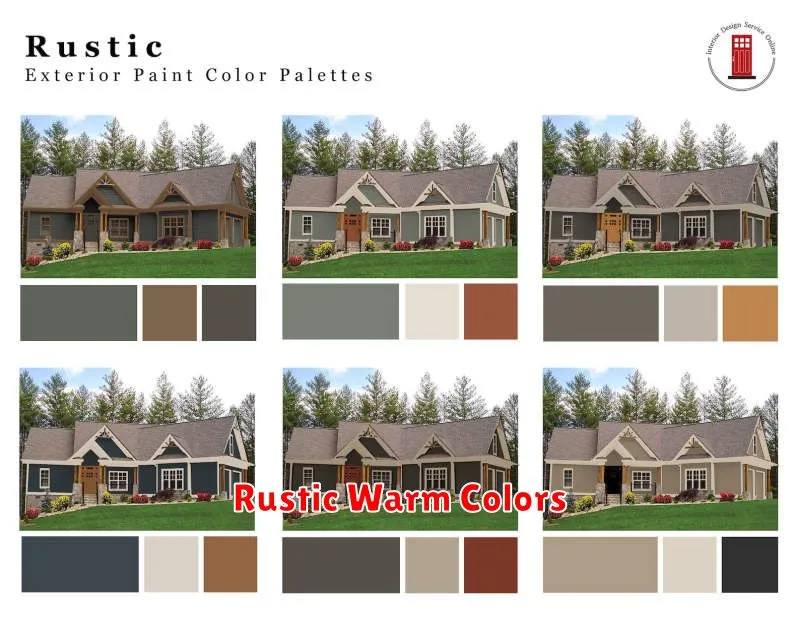
Rustic warm colors evoke a sense of comfort, nostalgia, and natural beauty. Think cozy evenings by a crackling fireplace, the warm glow of sunset on a weathered barn, or the rich hues of autumn leaves. These colors are perfect for creating a welcoming and inviting atmosphere in any space.
The palette typically includes shades of brown, from light beige and creamy tan to deep chocolate and espresso. These are often complemented by earthy tones like terracotta, burnt orange, and mustard yellow. A touch of deep red or burgundy can add depth and sophistication, while accents of cream or off-white help to balance the richness of the darker shades.
One of the key characteristics of a rustic warm color scheme is its texture. Think of rough-hewn wood, woven fabrics, and natural stone. These materials add visual interest and enhance the overall feeling of warmth and authenticity. The colors themselves often have a slightly muted or worn appearance, adding to the lived-in, comfortable feel.
Where to use rustic warm colors: These colors work beautifully in a variety of settings, from living rooms and bedrooms to kitchens and dining areas. They are particularly well-suited for spaces where you want to create a feeling of relaxation and comfort. Consider using these colors in your home office to foster a calm and productive workspace. The possibilities are endless!
Incorporating rustic warm colors: You can incorporate these colors through paint, furniture, textiles, and accessories. Think about using a warm-toned paint on the walls, adding a chunky knit throw blanket to your sofa, or displaying rustic wooden bowls and baskets. Even small touches, like a terracotta vase or a mustard yellow candle, can make a big difference.
Ultimately, the beauty of rustic warm colors lies in their versatility and ability to create a welcoming and inviting atmosphere. They are a timeless choice that will never go out of style, offering a sense of warmth and comfort that is both classic and effortlessly chic.
Dark Jewel Tones
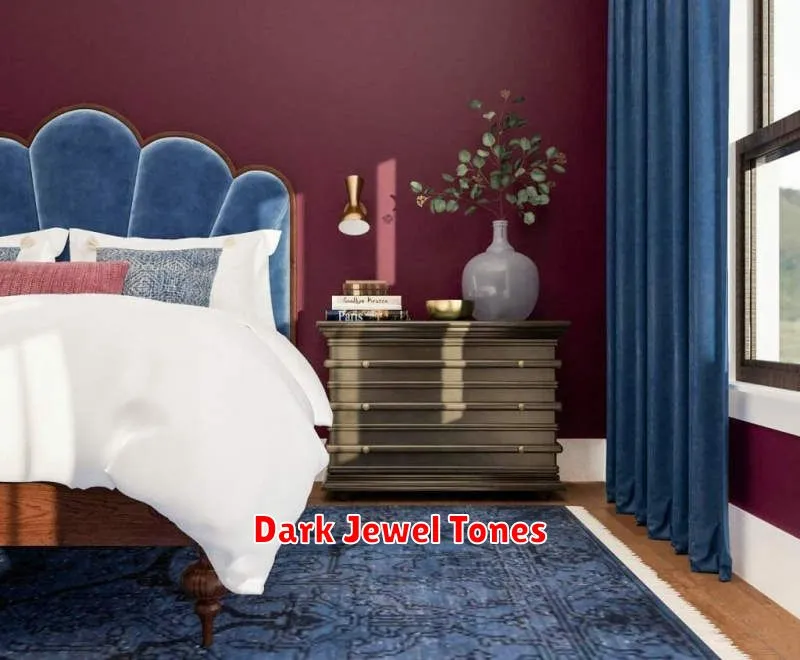
Dark jewel tones are making a significant comeback in the world of interior design and fashion. These rich, luxurious colors evoke feelings of sophistication, mystery, and warmth, offering a welcome alternative to lighter, brighter palettes.
Think deep emeralds, rich sapphires, and intense rubies. These aren’t your grandma’s jewel tones; we’re talking about modern interpretations with a touch of edge. Imagine a deep teal velvet sofa paired with brass accents, or a ruby red accent wall contrasted by charcoal grey furnishings. The possibilities are endless.
One of the key benefits of using dark jewel tones is their versatility. They can work in almost any room, from a cozy living room to a dramatic dining space. They’re particularly effective in rooms with limited natural light, as they can create a sense of intimacy and depth.
However, it’s important to use these powerful colors strategically. Too much can overwhelm a space, so consider using them as accent colors or on a single statement piece. Balancing them with lighter neutrals, such as cream or beige, can help to create a more harmonious and balanced look.
When incorporating dark jewel tones into your home, pay attention to texture and material. Velvet, leather, and silk all work beautifully with these rich hues, adding another layer of luxury and sophistication. Consider the overall mood you want to create – do you want a dramatic, opulent feel, or something more relaxed and inviting?
Dark jewel tones are a bold choice, but one that can truly transform your space. With careful consideration and planning, you can create a stunning and unforgettable interior that reflects your personal style and embraces the beauty of these richly saturated hues. Experiment with different shades and combinations to find the perfect palette for your home.
Classic White Elegance
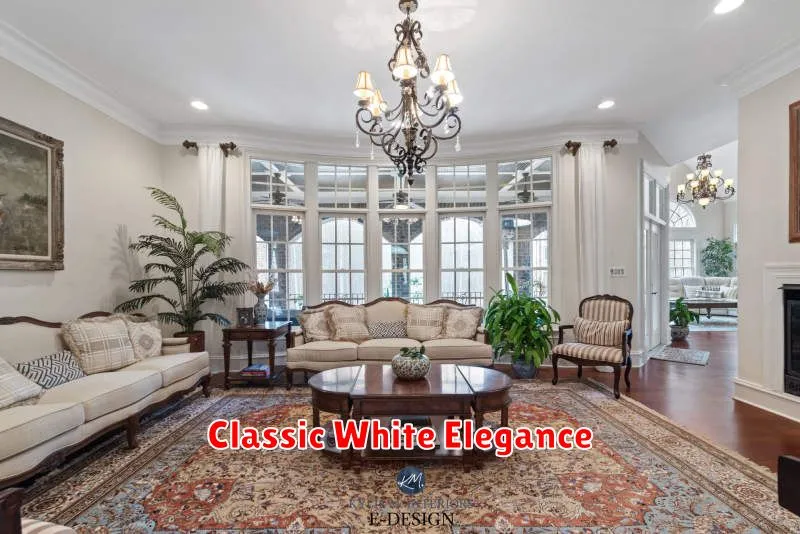
White. A color often associated with purity, simplicity, and timeless elegance. It’s a versatile shade that can transform any space, lending a sense of calm and sophistication. In interior design, a classic white palette offers endless possibilities, from crisp and minimalist to warm and inviting.
The beauty of a classic white design lies in its adaptability. It serves as a perfect backdrop for various styles, from traditional to modern. Whether you prefer a stark, minimalist aesthetic or a more layered and textured approach, white can be the foundation upon which you build your dream space.
Achieving a balanced white scheme requires careful consideration of various factors. The undertones of your white paint are crucial. Some whites have warm, creamy undertones, while others lean cooler, with hints of gray or blue. Selecting the right undertone depends on the amount of natural light in your room and the overall mood you wish to create. A warm white can make a room feel cozy and inviting, whereas a cool white can provide a sense of spaciousness and airy lightness.
Beyond paint, texture plays a vital role in preventing a white room from feeling sterile. Incorporate a variety of textures through furnishings and decor. Think soft, plush textiles like wool throws and linen cushions, the natural grain of wooden furniture, or the subtle pattern of a woven rug. These elements add depth and visual interest, preventing the space from feeling flat.
Accessorizing is where you can inject personality into your classic white scheme. Introduce pops of color through artwork, plants, or decorative objects. These accents will complement the white backdrop without overpowering it, adding a personal touch that reflects your unique style. Consider metallic accents, like gold or silver, to add a touch of glamour and sophistication.
Ultimately, a classic white interior is more than just a color choice; it’s a statement of refined taste and a commitment to timeless elegance. With careful planning and attention to detail, you can create a space that is both beautiful and effortlessly chic.
Ombre Accent Walls
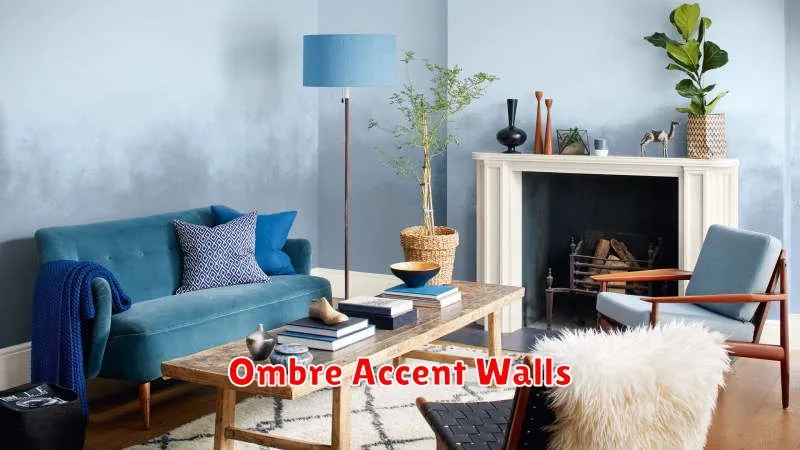
An ombre accent wall is a fantastic way to add depth and visual interest to any room. This design trend uses a gradual transition of color, creating a soft, sophisticated look that’s both modern and timeless. It’s a great alternative to a bold, single color, offering a more subtle yet equally impactful statement.
The beauty of an ombre wall lies in its versatility. You can customize it to fit any style, from a calming, minimalist aesthetic to a vibrant, bohemian feel. The color palette is entirely up to you; consider using analogous colors for a cohesive look, or experiment with contrasting shades for a more dramatic effect. Think warm neutrals transitioning to deep jewel tones, or bright pastels fading into a rich, saturated hue.
Planning your ombre wall requires careful consideration. You’ll need to choose your starting and ending colors, and decide how many shades you’ll use in between. A smoother gradient requires more shades, while a bolder transition works well with fewer. Consider using painter’s tape to create clean lines between your color sections for a precise and professional finish. Alternatively, you can embrace a more organic, hand-painted look for a less structured feel.
Choosing the right paint is crucial for achieving a seamless ombre effect. Opt for paints with similar sheens to avoid any noticeable differences in texture. Using a high-quality paint will ensure a smooth, even finish, making the color transition appear more natural. Consider using a sample pot to test your chosen colors on the wall before committing to a full can.
Beyond the visual appeal, an ombre accent wall can also help to create the illusion of space. Lighter colors at the top of the wall and gradually darkening towards the bottom can make a room feel taller and more open. Conversely, a darker ombre at the top can create a cozy, intimate atmosphere.
Whether you’re a seasoned DIY enthusiast or a beginner, creating an ombre accent wall is a rewarding project that can significantly transform your space. With a little planning and patience, you can achieve a stunning, unique feature that reflects your personal style and adds a touch of elegance to your home.

